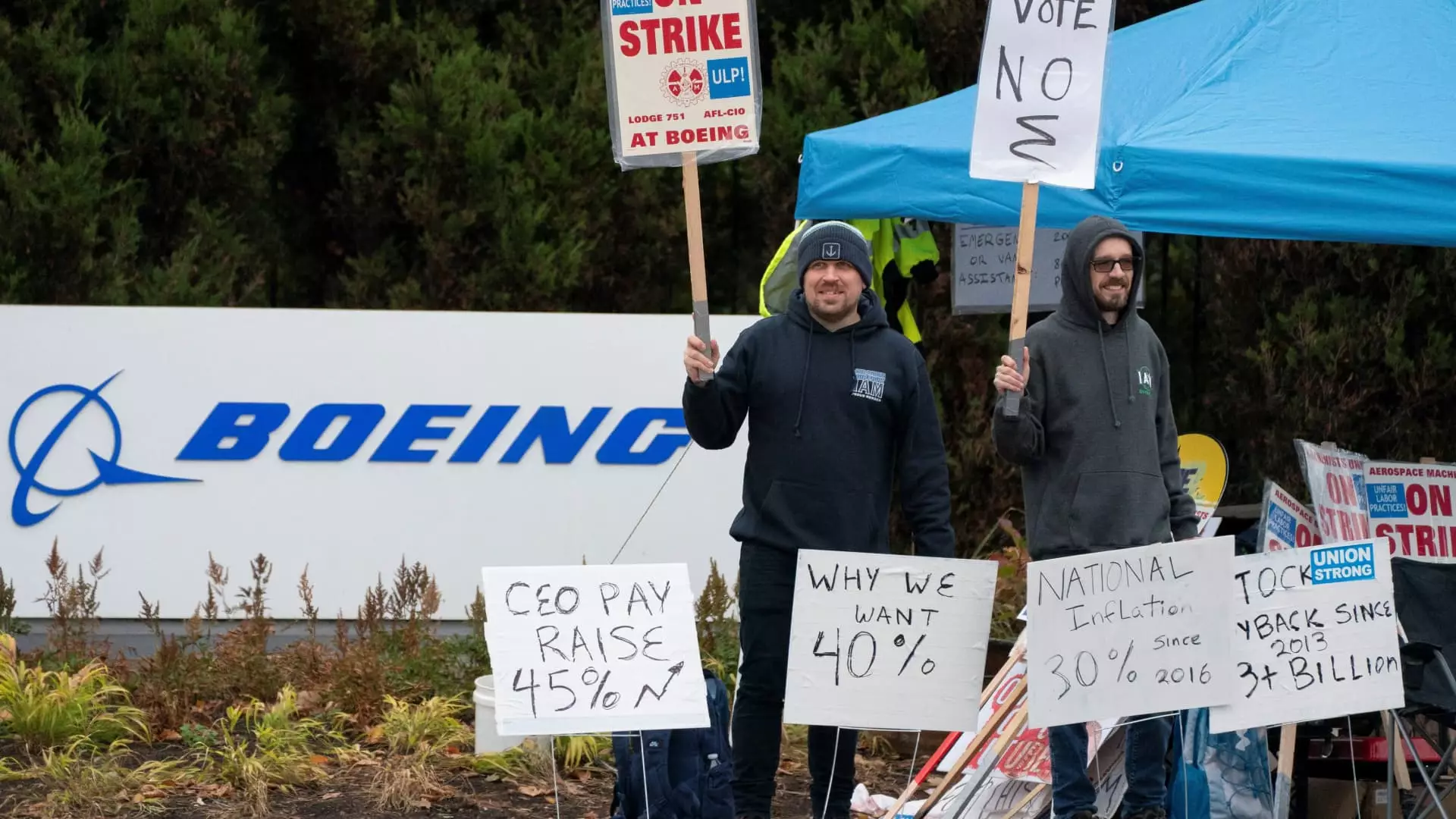The recent negotiations between Boeing and its machinists’ union have come to a pivotal moment, as both parties work towards a compromise aimed at resolving a seven-week strike. The outcome of this negotiation is not merely a labor dispute; it has broader implications for Boeing’s future as a dominant player in the aerospace industry.
The strike that began on September 13 reflects a significant moment for Boeing, a company that has long been a cornerstone of American manufacturing. The machinists, who number over 32,000 and primarily work in the expansive Seattle area, initiated the strike after rejecting a tentative agreement. This reaction is emblematic of ongoing tensions, not just within Boeing but in the aerospace labor market as a whole. With the cost of living in Seattle skyrocketing, workers have increasingly felt the absence of adequate compensation, exacerbated by rising expenses linked to technology industry giants like Amazon and Microsoft that have increased local wage competition.
The union’s concerns came to a head, and the subsequent strike was framed as a necessary action to protect workers’ financial interests. It’s crucial to understand that for many, this strike was not merely about immediate gains but about setting a precedent for future negotiations and workplace conditions.
A New Proposal: The Details at a Glance
As negotiations progressed, a new offer emerged, which includes a notable 38% pay increase over the next four years—a revision from an earlier proposal of 35%. To sweeten the deal, Boeing offered workers a choice: a substantial one-time ratification bonus of $12,000 or an alternative of a $7,000 bonus alongside a $5,000 contribution to their 401(k). This dual option reflects an understanding of the varying needs and preferences of the workforce, a critical consideration that can often be overlooked in union negotiations.
The International Association of Machinists and Aerospace Workers District 751 has demonstrated a strategic approach, emphasizing the urgency of returning to work to avoid a regression in future offers. Herein lies a crucial dynamic: the balance between negotiating power and the risk of a worse solution in the future is delicate and undercuts the notion of simply waiting to extract more.
Boeing is facing an enormous economic pressure as the strike has halted much of its aircraft production, impacting U.S. employment figures significantly. The ramifications extend beyond the immediate workers involved; they ripple through the economy, affecting suppliers, communities, and the perception of U.S. manufacturing. The involvement of the Biden administration adds a layer of public interest and governmental response to labor relations, suggesting that the administration recognizes the aerospace sector’s critical role in the national economy.
Acting Labor Secretary Julie Su’s engagement in the negotiation process signals the potential for governmental intervention in labor disputes deemed significant enough to warrant attention from the highest levels of power. It demonstrates a recognition that when major employers like Boeing falter, the consequences are felt widely—especially in a landscape already strained by economic challenges.
While the negotiations present an opportunity for resolution, they do not address underlying cultural issues within Boeing. The relocation of 787 Dreamliner production to a non-union facility in South Carolina has left significant grievances among the workforce. Such decisions can create a lasting divide between employees and management, fostering a lingering distrust that can take years to mend.
Furthermore, as Boeing attempts to stabilize its operations in the wake of financial losses and production issues—such as recent overhauls required after safety concerns linked to the Boeing 737 Max—its path forward remains fraught with challenges. The new contract, should it be ratified, represents a step towards rebuilding not just operational capacity but also trust among workers.
The resolution of this negotiation is critical—not just for the immediate needs of workers, but for the long-term health of Boeing and the aerospace industry as a whole. Balancing fair compensation with sustainable corporate practices is imperative for fostering a thriving workforce that can propel an industry forward. This situation encapsulates a broader struggle within modern labor relations, an ongoing conversation about fairness, respect, and the meaning of work in an ever-changing economic landscape.

